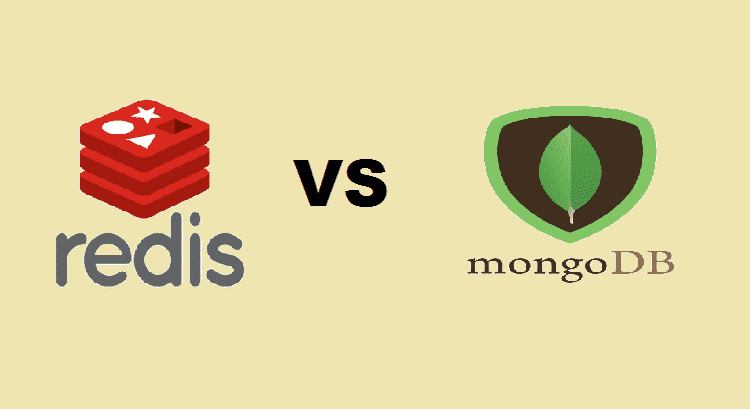MongoDB plus Redis both fall into the NoSQL group; however, that is wherever the similarities finish. Disk-based MongoDB is adjusted for operative ease, schema-free design, as well as very large information volumes. Associated with interactive databases, MongoDB works actually well if data needs compound processing, however, does not fit a rigid plan. MongoDB scales on product hardware simply and helps designers adapt toward changing requirements faster and more cost effective than interpersonal databases.
Redis, whereas furthermore schema-free, is an in-memory statistics structure store, often used as a file, cache, otherwise message broker. Not like other in-memory stores, Redis perseveres data. It is widespread with designers owing to its versatile, adjusted data structures arrays, hashes, sorted sets, lists, and strings, bit arrays which provide effective in-database operations for example set contrasts, list pull-push processes, and variety queries.
Purpose-constructed for performance
Redis permits developers toward run maximum operations on these constructions at the lowermost likely complexity and uppermost possible rapidity. Owing to their variances, MongoDB plus Redis could be complementary for usage cases, for example, mobile, APIs, IoT, huge Web apps, and additional applications wherever data is created too fast for it to be processed easily through a disk-based file alone. You can find freelancers to fulfill all your needs in a short time.
MongoDB is excessive at control any volume otherwise diversity of data being produced. Though, extreme speed poses a trial to any disk-based file. When there are lots of data points approaching at an app, using a disk-based file straight means you run the jeopardy of losing data otherwise creating extremely long queues toward store data that is waiting to be treated. Thus, Redis is usually used as a statistics ingestion buffer for MongoDB. Through Redis running very proficiently in memory, it converts simply to allow the real-time study of fast-moving statistics by shifting several of the processing toward Redis.
A growing quantity of use cases is developing wherever MongoDB plus Redis complement each other. The following are instances of real-world apps that syndicate MongoDB and Redis toward store data at scale plus process data extremely fast.
Real-time analytic service
A Google Analytic-like service toward large websites in addition to Web-based apps offers insights into user conduct by collecting lots of event data points plus aggregating as well as segmenting these figures to glean intellect. The main data store is MongoDB, assumed its powers in handling facts with varying plans. Redis is used for the real-time study, calculations, as well as exhibition of the high-volume occasion data that it gathers. You can hire freelancers online based on your requirements and your budgets too.
Redis is furthermore used for sessionising data. Each event gathered from an application otherwise website fits a meeting that a consumer starts alongside Redis. Papers with tens or thousands of occasions generate a stream of figures that need some quantity of unraveling. While there are hundreds plus thousands of users, occasion streams connected to many users are inserted. Updating every document with numerous small updates might be accomplished through disk-based MongoDB, however, the expenditure of the process is high and Redis’ hash data construction can make small work of the problem.
Real-time steering service
Real-time steering involves an enormous quantity of data that must continually be updated through changing situations. MongoDB stores still information for example destinations, routes, plus vehicles, but real-time reportage from apps on a mobile device, user reports of present traffic situations, plus GPS transponder statistics are fed into Redis, thus users can distinguish the state of living traffic and strategy their routes on the fly. You can find freelancers to fulfill all your needs in a short time.
Enormously multiplayer online game
A game providing to thousands of groups with hundreds of players everyone, all conflicting for resources plus control, has exclusive real-time necessities. Here MongoDB stores info for example tournament profile, resources, plus resource profiles, whereas Redis accomplishes game progress, consumer scores, and everything else that needs rapid appraises and shows. Redis sorted arrays are useful in these situations. The ZADD command enhances users to the organized set in the order of their score, plus the ZINCRBY command simply increases scores by a stated number.
Online dating app. While there are numerous thousands of dating apps, this particular one provides to directly finding groups of persons by physical proximity. MongoDB stores consumer profiles, whereas Redis tracks the place of users in real time as well as promptly reconciles their favorites with those of others. Redis commands similar GEOADD could add geospatial info such as latitude plus longitude to a stated key. Additional, the data is stored in a sorted set in a method that permits retrieval by proximity commands, for example, GEORADIUS otherwise GEORADIUS through a member.
An ecological monitoring app collects real-time info such as humidity, temperature, and CO2 levels from devices dropped into deeply forested parts in order to sense forest fires plus track other ecological problems. The temperature maps, sensor data, and other variables required for real-time calculation and warning are stored in Redis. Historic data is stored in MongoDB.
As the first-responder file, Redis not merely provides effective and high-performance statistics processing, it is furthermore a stable, dependable database that could be persisted to disk as required. Write processes, with disk-based files, are expensive processes. If you have thousands otherwise tens of thousands of these per second, you will have to maintain numerous shards, throw a load of hardware at the problematic, and still have to concern about write potential. You can hire freelancers online based on your requirements and your budgets too.
Redis offers quantity that is orders of scale higher than disk-based files, and latency that is reliably sub-millisecond. By using Redis, you could manage the fast updates in memory whereas consolidating writes toward the disk-based file at a lower rate. This method reduces hardware needs as well as makes savings on operative costs. We are progressively living in a manifold database world, wherever MongoDB, one of the maximum widespread NoSQL databases accessible, and Redis, one of the fastest-rising databases, work in tandem toward supporting new apps that demand both high capacity and high speed. Having already made the change to NoSQL files, MongoDB shops are discovering that the functionality plus speed of Redis accompaniments MongoDB for real-time use cases.




